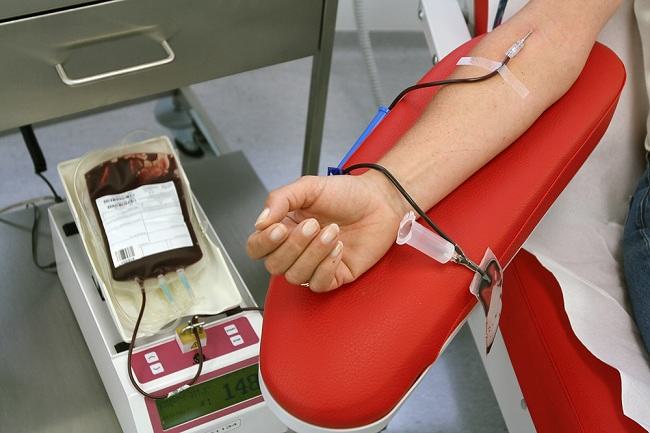Preparing a child's lunch with a healthy, delicious, and interesting menu is not an easy thing for parents, especially if the child has difficulty eating or likes to be picky about food. In order for the little one to finish his lunch, the mother must be creative in preparing the lunch.
Providing children with lunch that is equipped with healthy and nutritious food can increase children's concentration while studying, keep children energized while at school, and of course ensure that children stay healthy.

Although it can keep children away from the dangers of children's snacks at school, however, there are times when Mother runs out of ideas in preparing the type of healthy food that will be brought by the Little One as lunch. now, to help Mothers find healthy and interesting lunch menu ideas for your little one, see the following discussion, come on!
Important Nutrients in Children's Lunch
There are various nutrients that children need to carry out activities and help their growth, including:
1. Carbohydrates
Carbohydrates are the main source of energy for the body. Some types of foods that contain carbohydrates include rice, bread, cereals, noodles, pasta, potatoes, and sweet potatoes.
2. Protein
Not only as a source of energy, protein intake is important to support the growth and development of children.
To meet their protein needs, children need to eat protein-rich foods, such as meat, fish, eggs, tempeh, tofu, and nuts. Protein can also be obtained through milk and its products, such as cheese and yogurt.
3. Calcium
Calcium plays an important role in strengthening and maintaining healthy bones and teeth in children. To get the benefits of calcium, children need to eat foods that contain calcium, such as milk and its products, anchovies, eggs, broccoli, spinach, and tofu and tempeh.
4. Fat
Fat in food is useful as a source of energy for the body and helps the absorption of various vitamins. So that your little one gets enough fat, you can give him milk, meat, fish, eggs, avocado, and nuts.
5. Iron
Iron plays an important role in the formation of red blood cells that carry oxygen to all cells and tissues of the child's body. With adequate iron intake, children can avoid anemia.
Some types of foods that contain lots of iron include meat, fish, seafood, seeds, wheat, and nuts.
6. Folic acid
Folic acid is very important for the growth and development of children and the health of the nervous system and brain. Foods that contain folic acid include whole grain cereals, beans, chickpeas, asparagus, spinach, eggs, and kidney beans.
7. Vitamin A
This one vitamin has benefits for maintaining eye and skin health and increasing the child's immune system. Foods that contain high levels of vitamin A include carrots, sweet potatoes, pumpkin, apricots, spinach, broccoli, cabbage, fish oil, and eggs.
8. Vitamin C
Similar to calcium, vitamin C is also beneficial for maintaining healthy bones and teeth. Vitamin C also acts as an antioxidant that can maintain a child's immune system.
There are several types of foods that are rich in vitamin C, including oranges, strawberries, tomatoes, potatoes, melons, cabbage, broccoli, spinach, mangoes, and papayas.
Complete Children's Lunch with Complete Nutrition
To prepare a child's lunch with complete nutrition, follow the following guidelines:
1. Serve lunch with a variety of carbohydrate sources
Mothers can include wheat bread, potatoes, sweet potatoes, or brown rice in the child's lunch to meet their carbohydrate needs. Thus, children can stay energized during their activities at school.
2. Insert vegetables in food
Always complete your child's lunch with vegetables. Vegetables contain a variety of vitamins and minerals that are good for health. If your little one doesn't really like vegetables, you can slip vegetables into his favorite food.
3. Include it with high protein foods
Mothers are also advised to include high protein foods in their child's lunch. Types of foods that contain protein include omelettes, fish, or stir-fried meat.
4. Provide fresh fruit or juice
Give at least 1 fruit in the child's lunch menu every day. Fruits contain vitamins and minerals that are good for children's health. If your little one doesn't really like fruit, you can process the fruit into fresh juice without sugar.
5. Complete with milk or dairy products
The calcium content in milk or its processed products, such as yogurt and cheese, is important for the growth and development of children.
Mothers can prepare boxed milk, add cheese, or give your little one a snack in the form of yogurt in his lunch. If your little one is allergic to cow's milk, you can give him peanut milk.
Pack Children's Lunch Supplies Attractively
So that your little one is interested in the lunch that you prepare and eats voraciously, you can try to package the lunch in an interesting way.
The following are some examples of lunch menus that you can make for your little one:
Sandwiches with a unique shape
In order not to be boring, Mother can make sandwiches with various shapes, such as circles, squares, triangles, or even animal shapes using food molds. You can also complete the sandwich with your little one's favorite bread jam.
Fried octopus sausage
Shape the sausage into an octopus before you fry it. The trick is to split one end of the sausage into four to the center of the sausage. Fry the sausages until fluffy and serve with rice or whole wheat bread.
Panda rice
Shape the rice into small fists or balls. After that, give decorations in the form of eyes, eyebrows, mouth, and hands using pieces of seaweed so that it resembles the shape of a panda.
So that your little one is interested in eating the lunch he brought, Mother needs to make sure the lunch is according to his taste. You can also invite your little one to choose the food and ingredients that will be his lunch.
If your little one is still having a hard time eating and often doesn't finish his lunch, you can consult a pediatrician to check your little one's health condition as well as find out what kind of food needs to be given so that he doesn't lack nutrition.









